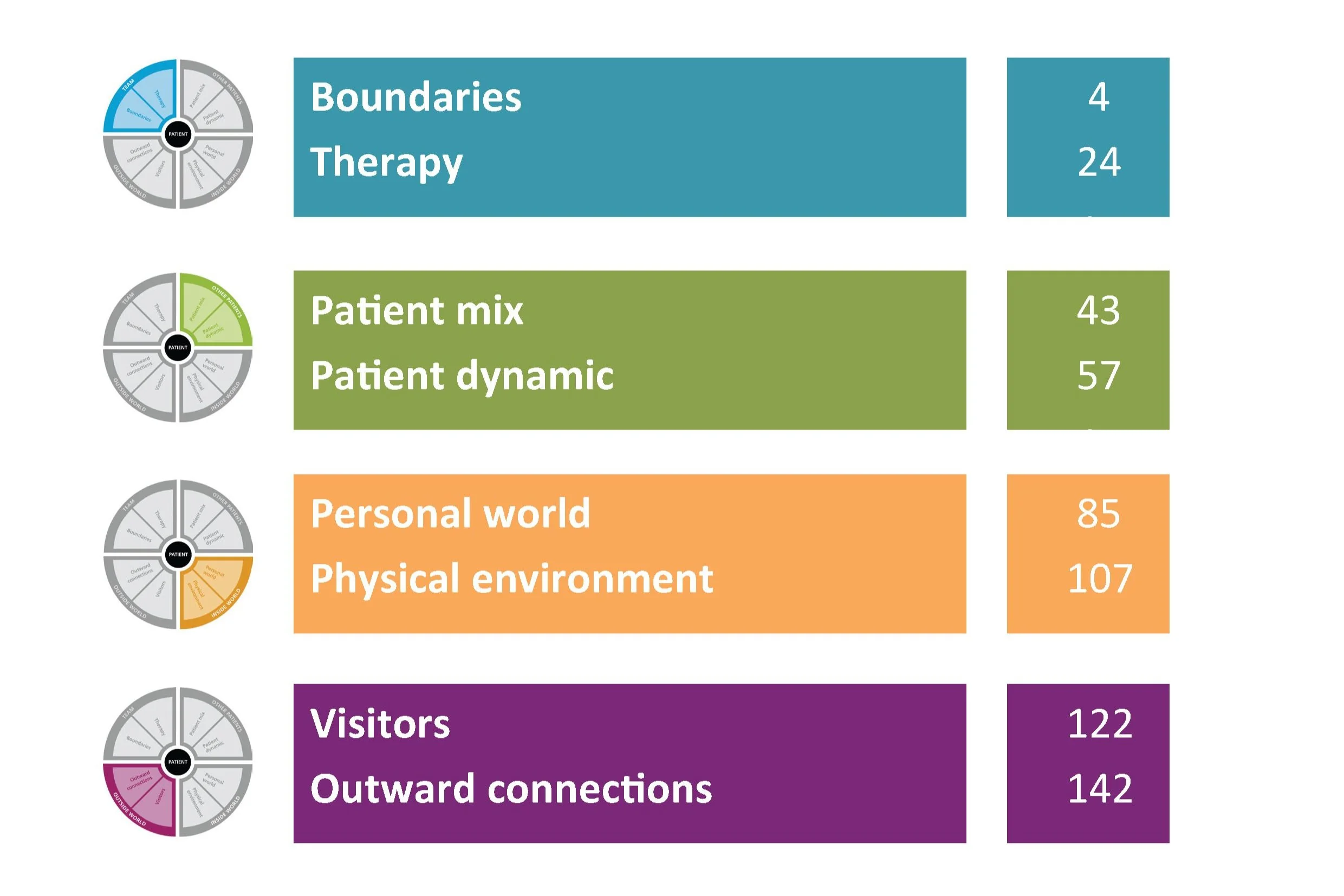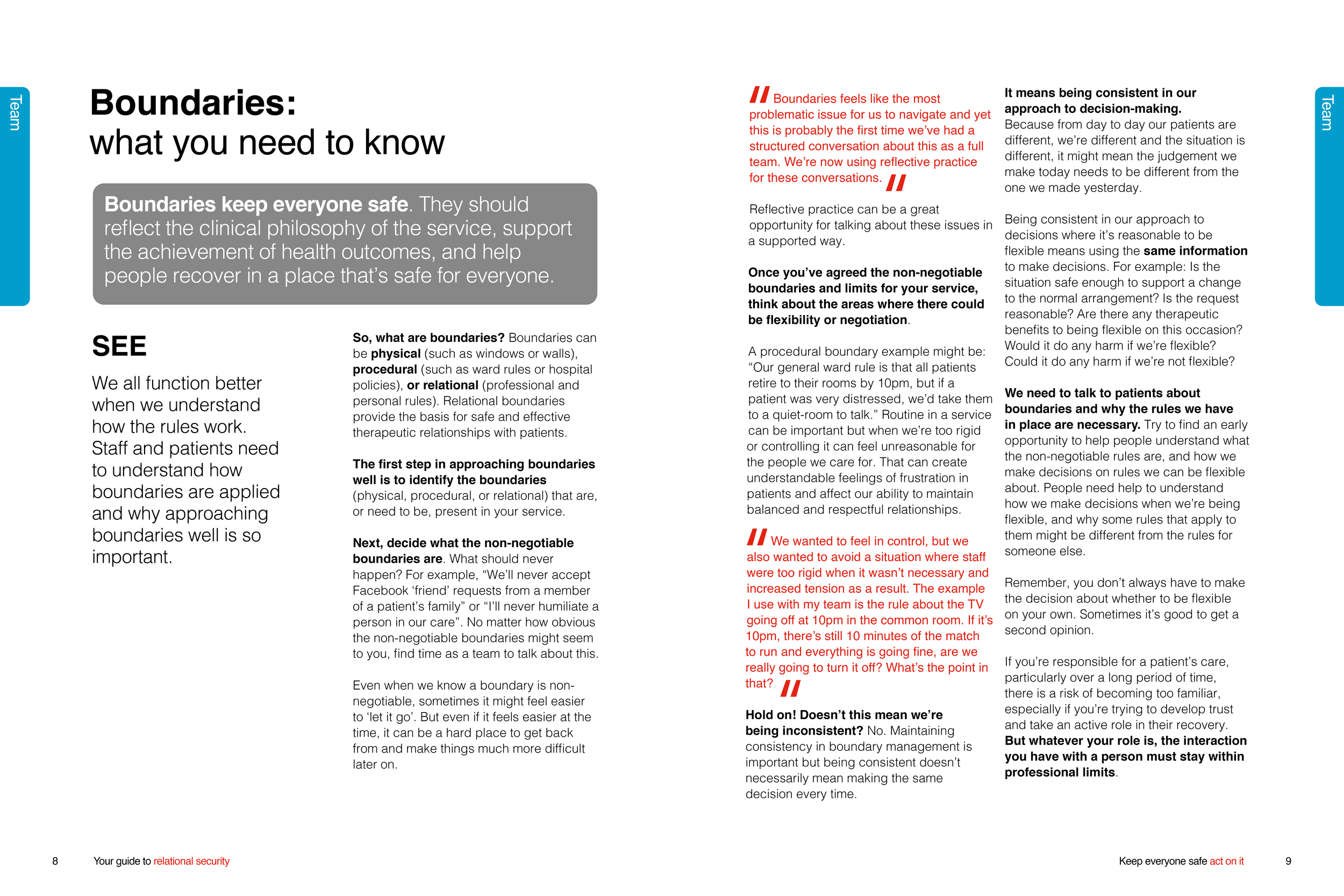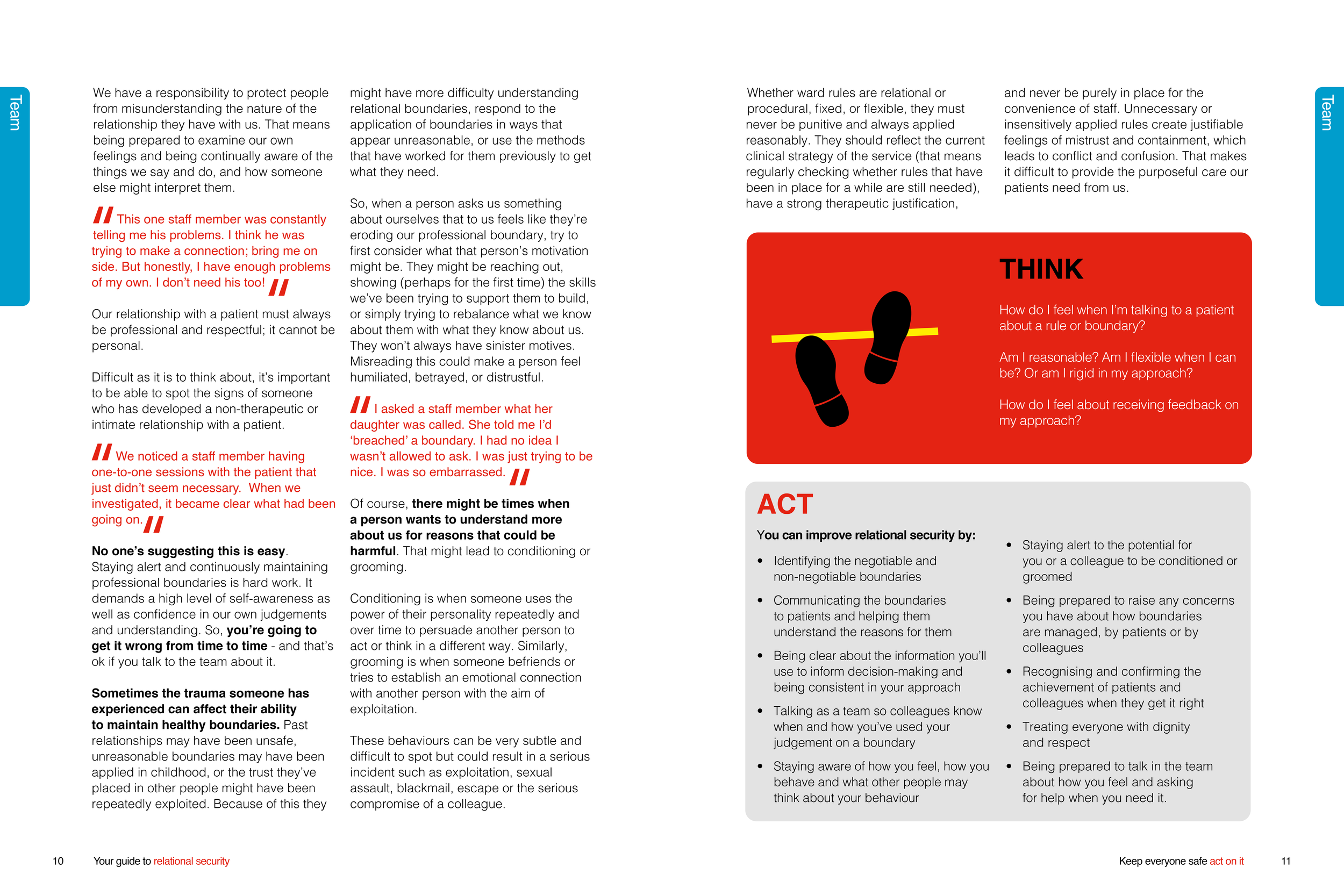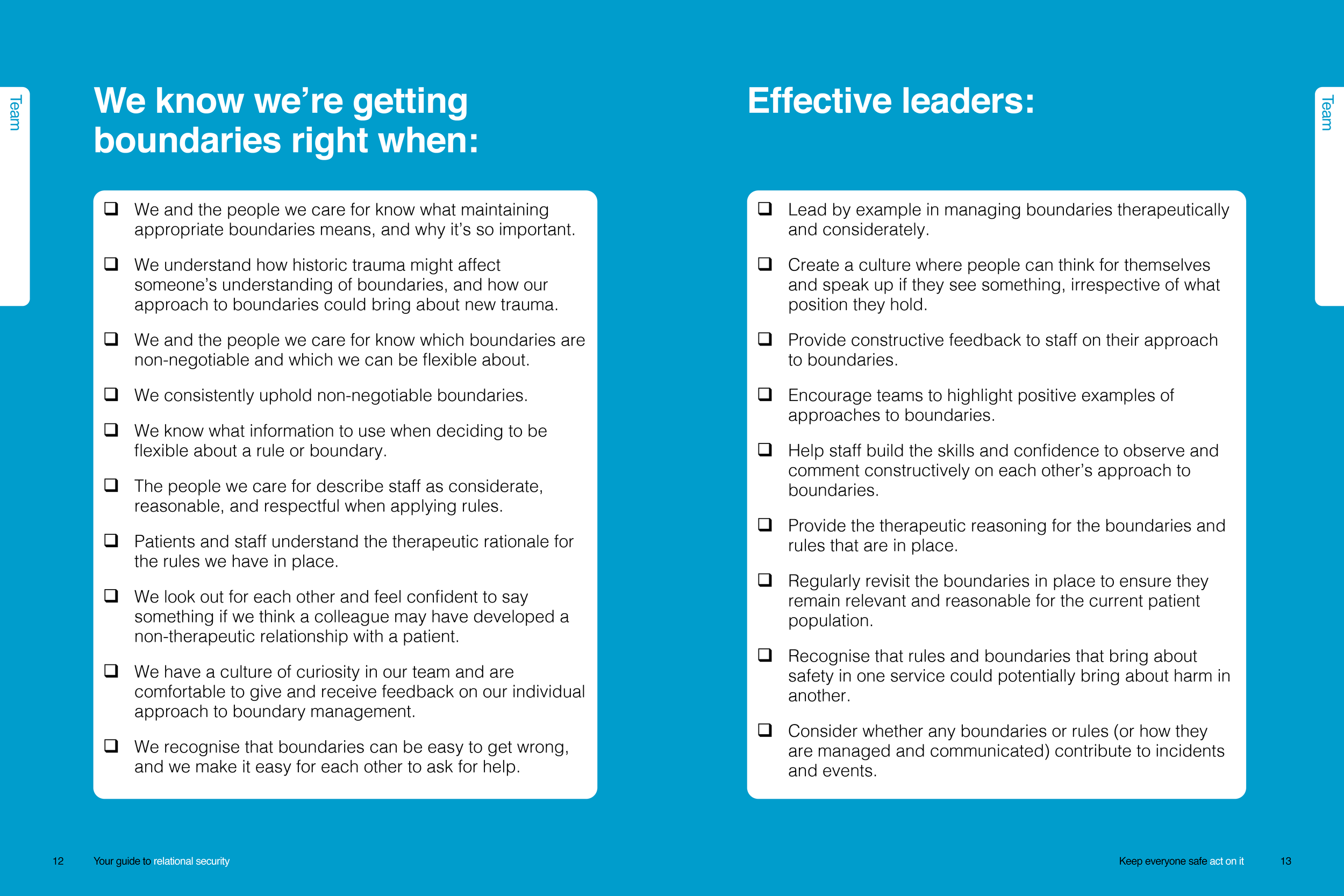Boundaries
Guidance for evaluators
Evaluation questions for wards
-
Rules and boundaries should reflect the therapeutic goals of the service. There should be an understanding that rules and boundaries which make one service safer and more therapeutic, might have the potential to make things worse in another service.
-
How do staff appear to handle requests from patients? Do they meet the request with empathy and understanding? Or are they dismissive and impatient? Do staff take time to understand the person’s motivation for the request? Do staff appear to be fair, respectful, and human in their approach? Are staff confident to uphold boundaries that have been established for the well-being of that person or for the safety of others?
-
Do patients describe staff as fair in their approach? Do patients feel they can question the rules in place? Do patients see balance, in that the staff follow the same rules as the patients? What do patients think about the extent to which the boundaries, or the management of boundaries, are responsible for any incidents in the service?
-
A high performing service should be able to speak to having evaluated the therapeutic justification for having the rule or boundary in place. Staff should be able to explain the reasoning for a rule or boundary, in a way that is meaningful to patients.
-
Do staff understand which rules and boundaries are non-negotiable, and those that can be flexed in some circumstances? Are staff confident in their management of boundaries, with an ability to use their therapeutic judgement? Do staff understand how to apply consistency in boundaries they can be flexible about? Do they know what information to use to make that decision? Or, are you left with the impression that staff are uncomfortable to use their judgement, rely on the rules for a sense of control, feel that safety can only be achieved by sticking to the rules, or are overly rigid in their approach?
Evaluation questions for leadership
-
Rules and boundaries should reflect the therapeutic goals of the service. There should be an understanding that rules and boundaries which make one service safer and more therapeutic, might have the potential to make things worse in another service.
-
How do staff appear to handle requests from patients? Do they meet the request with empathy and understanding? Or are they dismissive and impatient? Do staff take time to understand the person’s motivation for the request? Do staff appear to be fair, respectful, and human in their approach? Are staff confident to uphold boundaries that have been established for the well-being of that person or for the safety of others?
-
Do patients describe staff as fair in their approach? Do patients feel they can question the rules in place? Do patients see balance, in that the staff follow the same rules as the patients? What do patients think about the extent to which the boundaries, or the management of boundaries, are responsible for any incidents in the service?
-
A high performing service should be able to speak to having evaluated the therapeutic justification for having the rule or boundary in place. Staff should be able to explain the reasoning for a rule or boundary, in a way that is meaningful to patients.
-
Do staff understand which rules and boundaries are non-negotiable, and those that can be flexed in some circumstances? Are staff confident in their management of boundaries, with an ability to use their therapeutic judgement? Do staff understand how to apply consistency in boundaries they can be flexible about? Do they know what information to use to make that decision? Or, are you left with the impression that staff are uncomfortable to use their judgement, rely on the rules for a sense of control, feel that safety can only be achieved by sticking to the rules, or are overly rigid in their approach?

Prompts
It’s not essential to use these questions as they’re written, but some of these prompts may help you build a better understanding of and make fair judgements about a service.
Patient: “How do the rules feel to you? Do they seem reasonable for the circumstances?”
Service lead: “Can you help me understand how the rules and boundaries were set for this ward/service? What process did you go through to make sure they’re a good fit for the people you care for?”
Staff: “When’s the last time you had feedback from a colleague about how you approach boundaries? Or given feedback to someone else? Is that something you’d be comfortable with?”
Staff: “What’s your understanding of why this rule is in place?”
Patient: “Whether you agree with them or not, do you feel that you understand why the rules here are in place? Are there any rules that don’t make sense that you’d like to understand?”
Staff: “How do you decide whether or not you can be more flexible with a rule or boundary for a patient? What information do you use?”
Staff: “What’s the most significant challenge you face in applying boundaries and rules in the service?”
Patient: “What explanation do you most often get when it’s not possible to give you or allow you to do something you’ve requested?”
Supporting resources
-

Powerpoint presentation
This presentation covers the boundaries section of the full MDT training presentation.
You can use it as it is, or adapt it to your training and development needs by adding your own case studies or examples.
-

Boundaries card exercise
This is a boundaries exercise to support a full MDT conversation about the rules in the service, and which rules are non-negotiable, and those we can be flexible about.
Teams can amend these prompts with boundaries specific to their service.
-

Development workbook
This is the boundaries section of the relational security development workbook.
You can use the workbook in the complete form, or you can use individual exercises during your conversations and development sessions.
-

Developing staff competency assessment
The competency assessments for staff and leaders, included at the end of each module in the development workbook, have been produced here as a single document for those services who find it useful to incorporate the assessments into other frameworks.



